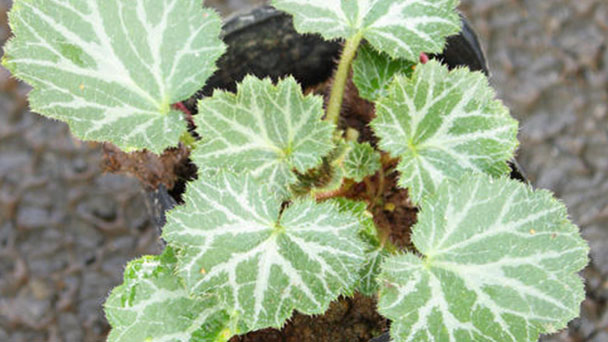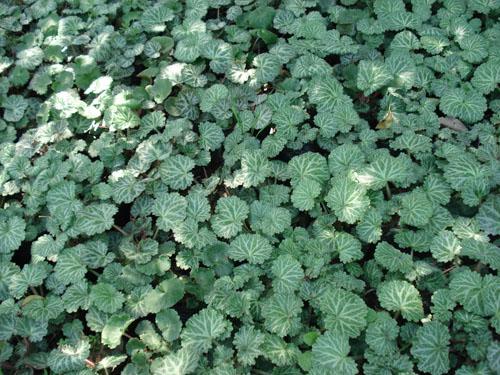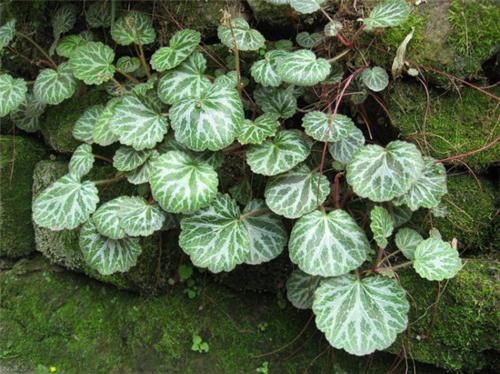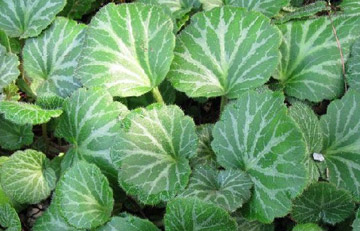Strawberry Begonia profile
Written by Maggie
Oct 20 2021

Strawberry Begonia, scientific name Saxifraga stolonifera, also known as creeping saxifrage, creeping rockfoil, was born in the elevation of 400-4500 meters under the forest, thickets, meadows and shade wet rock gap. The origin is China, Korea, Japan also have distribution. It is a vine with cascading slender branches that can be widely grown as an ornamental plant. Contains alkaloids, potassium nitrate, potassium chloride and arbutin. The phenolase contained in its chloroplast can use cis-caffeic acid and whole grass as medicine.
Strawberry Begonia picture

The morphological characteristics of Strawberry Begonia
Strawberry Begonia Small perennial herbs that do not wilt in winter. Roots are slender; Stolons are slender, purplish red, sometimes bearing leaves and adventitious roots.
Strawberry Begonia leaf is basal, usually several; Petiole is 3-10cm long; Leaf blade is fleshy, rounded or reniform, 4 -- 6cm in diameter, sometimes larger, cordatate or truncate at base, margin shallow lobes and irregularly serrulate, green above, often white markings, purplish red below, pilose on both surfaces.
Strawberry Begonia is up to 25cm tall, erect or slightly sloping, branched; Inflorescences is paniculate, axles and branches, pedicels glandular hairs and tomenti; Bracts are lanceolate, pilose; Sepals are ovate, apex acute, spreading outward; Flowers are numerous, petals 5, white or pink, lower 2 long, elliptic lanceolate, 1 -- 1.5cm long, 2 -- 3mm wide, upper 3 small, ovate, with yellow spots at base;Stamens 10, filaments clavate, ca. 1 times longer than sepals, anthers are purplish red; Ovary is globose, style slender, stigma fine.
Strawberry Begonia capsule is ovoid, apex 2-lobed, beaklike. Flowering period is from May to August, fruiting period from July to November.
Strawberry Begonia's distribution area
Strawberry Begonia is mainly distributed in temperate and frigid regions of the Northern Hemisphere.
Strawberry Begonia's growth habits
Strawberry Begonia is a perennial evergreen herb. Plant in small pots with leaf rot or peat soil and require good drainage. During the growing period, liquid fertilizer should be applied once every 2~3 weeks.
The cold tolerance of Mosaic and leaf varieties is poor, and it is best to keep above 15℃.
Strawberry Begonia requires a slightly stronger shade, with 50% to 60% shade in the summer, otherwise it is not brightly colored. Adequate water is needed during the growing period. After flowering a dormant period, should be watered less.
Strawberry Begonia growing methods
Climate, soil
Strawberry Begonia preferred shade, and the soil required was fertile and wet, preferring dense, wet undergrowth and cool, damp walls.
Planting
Strawberry Begonia was bred by spawn. In the Sichuan region, plants with developed fibrous roots and robust growth, 7-10cm in height, are selected as seedlings growing from creeping twigs in summer and pulled up as seedlings. If it is cultivated under the forest, it is necessary to remove weeds and overdense shrubs on the ground, open holes according to rows and plant spacing of about 17cm, plant shallowly on the ground, and press the roots in the soil. If in the wet stone or stone wall cultivation, seedlings can be planted in the stone crevices, with moist humus soil to pressure the fibrous roots, watering.
Field management
Strawberry Begonia often mowed the grass and pulled out large bryophytes.

Strawberry Begonia's method of propagation
In the Sichuan region, plants with developed fibrous roots and robust growth, 7-10cm in height, are selected as seedlings growing from creeping twigs in summer and pulled up as seedlings. If it is cultivated under the forest, it is necessary to remove weeds and overdense shrubs on the ground, open holes according to rows and plant spacing of about 17cm, plant shallowly on the ground, and press the roots in the soil. If in the wet stone or stone wall cultivation, seedlings can be planted in the stone crevices, with moist humus soil to pressure the fibrous roots, watering.
Strawberry Begonia Disease Control
Strawberry Begonia diseases mainly include gray mould and powdery mildew. Gray mould mainly harms leaves. Patches often occur along the leaf margin, semicircular or circular to irregular, watery, dark green to brown. When the humidity is large, the disease expands rapidly when the whole leaf becomes black brown and rotts seriously, the disease produces a gray mold layer.
Available 28% graymycogram wettable powder 800 times liquid; Powdery mildew was controlled with 50% carbendazim 800 times solution. Pests may include mealworms and mealworms.
Strawberry Begonia's main value
Watch: strawberry begonia stems long prostrate flagging, stem tip with small strain, is like a golden thread hanging lotus. Strawberry Begonia can be used for rock garden greening, or potted for indoor hanging. (Find more best indoor hanging plants here.)
Medication: Strawberry Begonia can be used as medicine. Function: dispelling wind, clearing heat, cooling blood and detoxification, treating rubella, eczema, otitis media, erysipelas, cough, vomiting blood, pulmonary carbuncle, collapse and leakage, hemorrhoids.
Strawberry Begonia flower language
Continuous, true love.

Latest Updated
- Benefits of Bugleweed - 7 Science-backed Health Benefits
- Bugleweed Dangers & Side Effects - Is It Poisonous?
- How to Plant Evergreen Trees - What You Should Know
- When to Plant Evergreens - Grow Guide for Evergreen Trees
- 12 Wonderful Evergreen Shrubs for Your Garden
- 12 Popular Evergreen Plants with Pictures for Beginners
- When And How To Prune A Lilac Bush Like a Pro
- How to Grow & Care for Lilac Vine (Hardenbergia Violacea)
- Japanese Lilac Tree (Syringa Reticulata) Care & Propagation Guide
- Shumard Oak Pros and Cons - What to Know
Popular Articles
- Winter maintenance of Antirrhinum Majus
- How to Grow Terminalia Mantaly Tree
- How to Grow and Care for Crossostephium Chinense
- How to grow Antirrhinum Majus in spring
- Peristeria Elata (Dove Orchid) Profile: Info & Care Guide
- Underwatered Snake Plant (Sansevieria Trifasciata) - Signs And How To Fix
- How to Care for Brazilian Jasmine Plant (Mandevilla Sanderi)
- How to Grow & Care for Graptopetalum Purple Delight in Summer
- Rosa Chinensis (China Rose): Plant Growing & Care Tips
- How to Care for Baby Sun Rose (Aptenia Cordifolia)